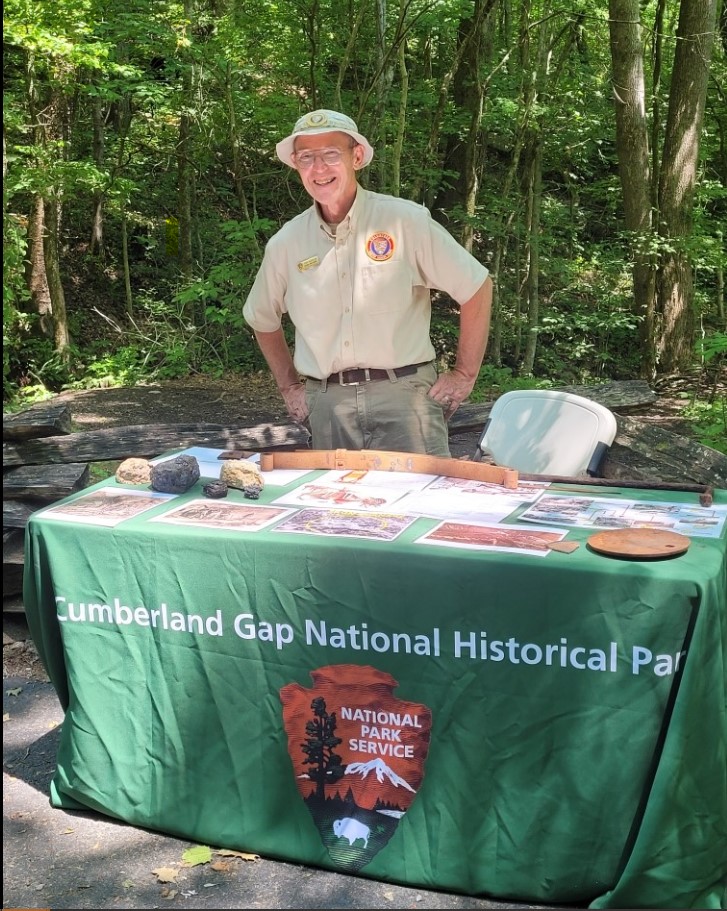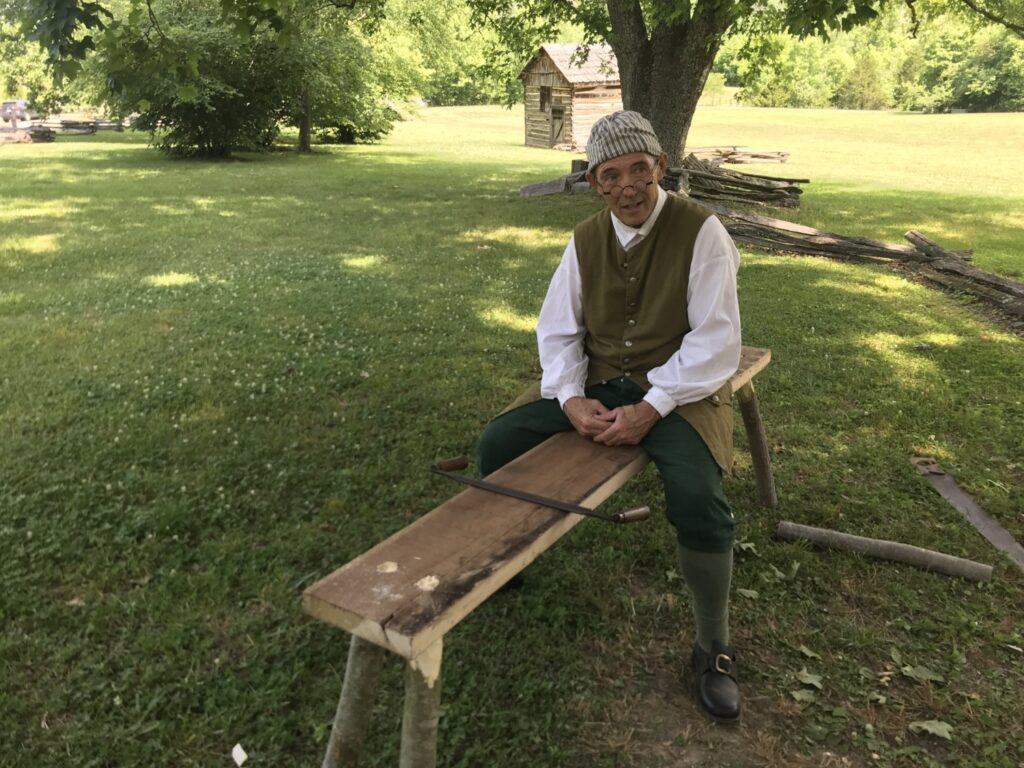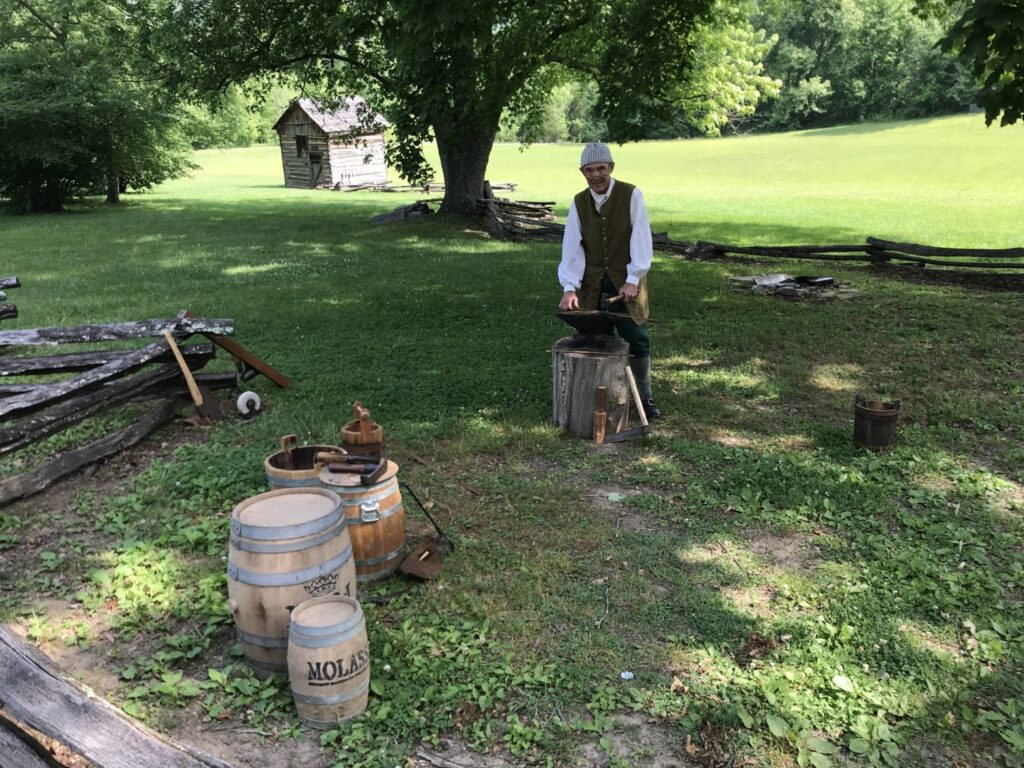While we are at Cumberland Gap National Historical Park, my main duty is living history. When we first got here, the rangers all seemed to assume that Tom and I would spend every day doing living history. Living history is fine and Tom has several talks that he can give. But my living history program is all colonial textiles and giving it day after day gets to be a chore. After some push on our part, we got a more varied schedule.
Living history remains, however, my main duty. I have an ideal setup for my living history. I have an entire room to myself, with a log cabin backdrop. I have three spinning wheels, my little loom, my table of raw and finished materials, and several tools supplied by the park. At one time the park must have had a good textile program because they own two spinning wheels, a flax brake, a coarse hackle, and a drum carder. I have all this setting out in my room and I use all of it in my complete talk.

When people come in my room, I begin by talking about the two choices of cloth for women coming through the Cumberland Gap. They could make cloth out of flax or wool. Wool is fairly intuitive, but flax is a little more complicated to process, as I explained in this post. If people stick with me through all the stages of processing flax, they are usually amazed at how much hard work making a piece of cloth was.

If they are interested, I demonstrate the castle spinning wheel. Some people also want to see the wool (walking) wheel in action. I have gotten better at it over the summer but still prefer my foot-powered castle wheel. I also demonstrate how a loom works. If people stick around for the whole talk, it takes about 1/2 hour. On busy days I just keep going through the loop and people pick it up wherever they come in.
I like spinning and weaving and processing the flax, so it isn’t a hardship to stay up in my room working. I will get anywhere from 50 to 150 people visiting my textile room when I am up there all day.

Tom has three living history demonstrations that he does here at Cumberland Gap. He is blacksmithing most Mondays, and then on Saturdays he does surveying or coopering. He and I laugh sometimes at how popular he is because he can draw a crowd when all he has is a drawknife, a shaving horse, and a piece of wood.
On Fridays Tom does a talk at the Iron Furnace about the history of iron production. On Sunday afternoons he sometimes leads the Gap hike, which takes people to the actual Cumberland Gap, following in the footsteps of bison, Native Americans, and pioneers who passed through.

Our main duty is living history and we are happy to do it. People always enjoy seeing us make things and understanding how they work. We continue to teach people new things about old stuff.




